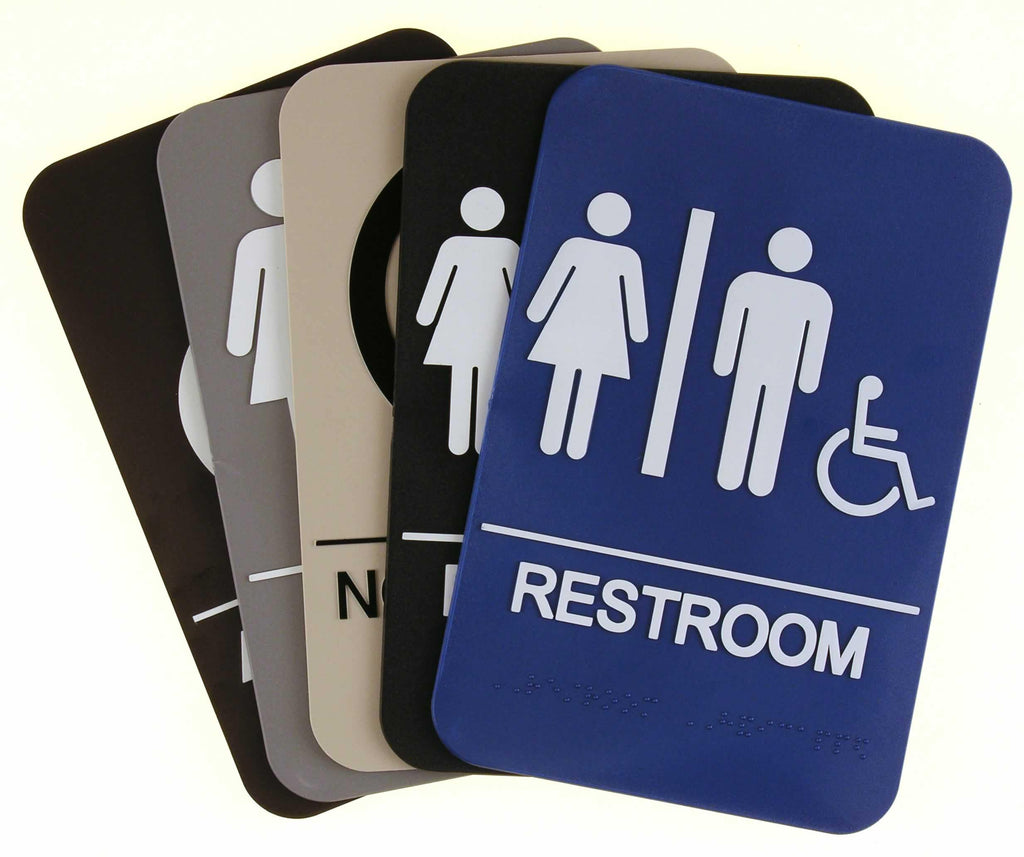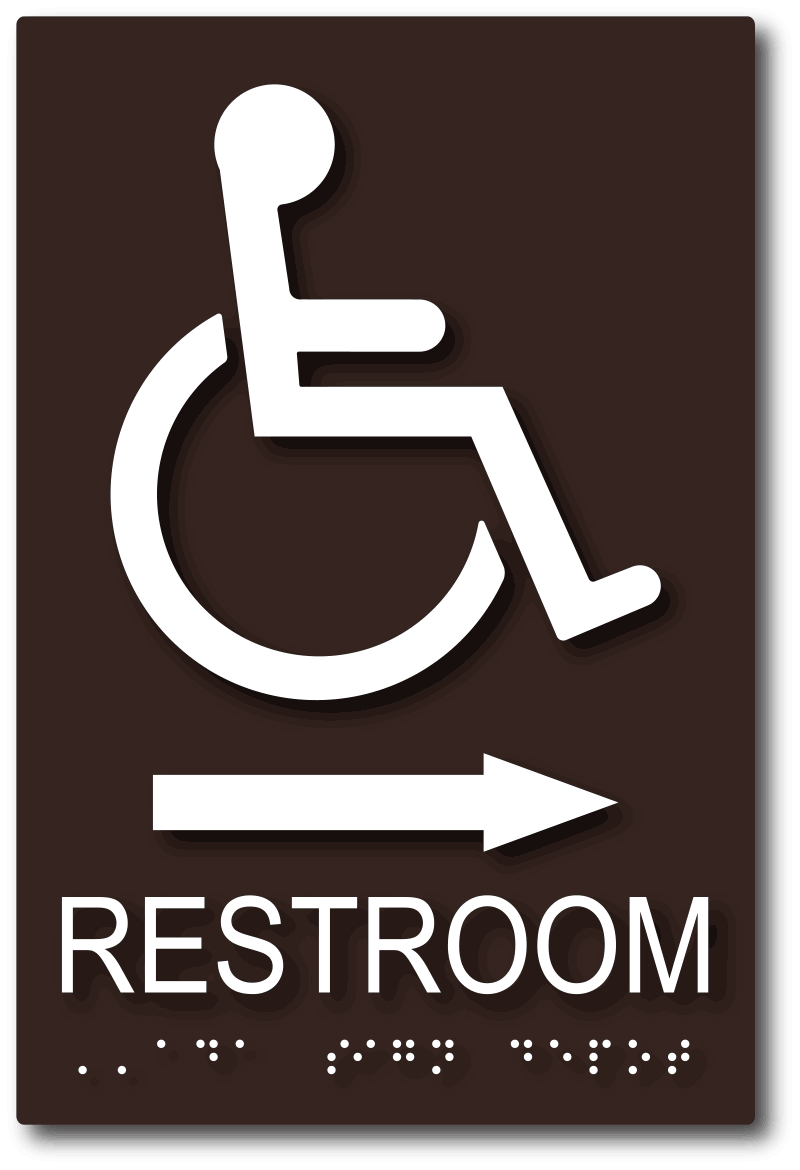Check out the Significance of ADA Signs in Public Spaces
Wiki Article
ADA Signage: Ensuring Availability and Conformity in Public Spaces
ADA signs plays a crucial duty in guaranteeing availability and conformity within public rooms, significantly adding to a comprehensive setting for people with impairments. By sticking to ADA criteria, signage not just assists in navigating however additionally underscores a company's devotion to diversity and equality. As we explore the subtleties of ADA signs, from tactile functions to design intricacies, it's crucial to take into consideration exactly how these aspects coalesce to maintain the rights of all users. What are the common pitfalls companies face in preserving conformity, and just how can future fads in signage continue to drive availability ahead?Significance of ADA Signs
In modern-day culture, the relevance of ADA signs prolongs beyond plain compliance with legal requireds to embody a commitment to inclusivity and access for all individuals. These indicators are essential in developing environments where individuals with impairments can browse public spaces with the same convenience and self-reliance as those without disabilities. By giving clear and standardized information, ADA signage ensures that everybody can access facilities, solutions, and info without obstacles.The significance of ADA signage lies in its ability to improve the lifestyle for individuals with handicaps by promoting equivalent accessibility. It removes the barriers that could or else hinder their ability to participate fully in neighborhood life. Furthermore, these indications act as visible signs of an organization's devotion to variety and equality, reflecting wider societal values that champion the legal rights and dignity of all people.
Moreover, ADA signage plays an essential role in public safety. By guiding individuals to departures, restrooms, and other crucial facilities, it makes certain that all individuals, despite physical capacity, can evacuate safely during emergencies. In recap, ADA signs is not simply a regulatory need however an effective tool for fostering a inclusive and fair society.
Crucial Element of Conformity

Placement is important; indications need to be mounted in areas that are easily visible and obtainable. Commonly, signs should be mounted in between 48 and 60 inches from the ground to ensure access for both standing and wheelchair customers. Tactile elements, such as Braille, are important for individuals with aesthetic problems, giving critical details in a non-visual layout.
High-contrast shades between the text and history are required to improve readability for individuals with low vision. The ADA mandates particular contrast proportions to ensure quality. Furthermore, personality size is an essential consideration, with minimal height demands determined by the watching range to ensure readability from various angles.
Style Factors To Consider for Accessibility
Creating obtainable signage calls for a careful strategy to guarantee it satisfies the needs of all customers, specifically those with handicaps. This entails considering various style elements that improve readability and usability. Trick factors consist of the option of font, color contrast, and tactile functions. Font styles should be sans-serif, with clear and easy letterforms, to assist in easy analysis. The size of the message is similarly critical, with ADA standards recommending a minimal elevation based on seeing distance to guarantee legibility.Contrasting colors between message and background are crucial for visibility, especially for individuals with visual impairments. A high contrast ratio aids identify the message from its background, enhancing readability under various lights conditions. Furthermore, tactile elements, such as Braille and raised characters, are crucial for individuals that are blind or have low vision. These components must be situated at a regular height and setting to make sure simple gain access to and understanding.
Furthermore, the positioning of signage plays a significant role in accessibility. Indicators need to be installed in locations that are unobstructed and quickly reachable. Guaranteeing that signage is installed at appropriate heights and angles enables all individuals, consisting of those utilizing mobility devices, to interact with them effectively.
Common Mistakes to Prevent

An additional prevalent Read Full Report mistake is the inaccurate positioning of signs. ADA standards define accurate height and place requirements to make certain that signs are obtainable and quickly visible by all More about the author individuals, including those making use of wheelchairs. Overlooking these standards not only interferes with availability however also risks non-compliance with legal requirements.
Furthermore, inadequate contrast in between text and history is a regular oversight. Ample contrast is essential for readability, especially for people with low vision. Developers sometimes select shades that are visually enticing but do not have the needed contrast, making the message tough to recognize.
Lastly, some designers fail to incorporate responsive aspects, such as Braille, which are vital for people that are blind. Omitting these functions not just causes non-compliance with ADA laws but additionally limits accessibility for a sector of the populace that counts on tactile information.
Future Trends in Signage
Advancements in technology and boosting recognition of inclusivity are shaping the future trends in signs design. As society ends up being much more mindful of diverse needs, the integration of wise technologies into signage is obtaining traction. Digital signage, as an example, is developing to include interactive features and real-time updates, which can be important in supplying vibrant details in public areas. These signs frequently include touch displays or gesture-based controls, making it possible for customers to navigate material tailored to their details demands.An additional emerging trend is the use of increased fact (AR) to enhance user experience. AR-enabled signs can overlay digital details onto the physical atmosphere, offering visually impaired people with auditory or haptic comments. ADA Signs. This modern technology not just boosts availability yet additionally develops an appealing experience for all users
Sustainability is additionally a substantial aspect affecting signs patterns. Environment-friendly materials and my explanation energy-efficient lighting options are being prioritized to line up with global environmental goals. Moreover, innovations in products scientific research are bring about the growth of more resilient and weather-resistant indicators.
Final Thought
ADA signage plays an important function in ensuring accessibility and conformity within public spaces by integrating tactile elements, high-contrast colors, and calculated positioning. The adherence to ADA requirements not only promotes safe navigating for individuals with specials needs but also signifies a company's commitment to diversity and inclusivity. By avoiding typical blunders and welcoming future patterns, public rooms can proceed to progress these values, making certain that the rights and self-respect of all individuals are valued and upheld.ADA signage plays a crucial duty in guaranteeing accessibility and compliance within public areas, significantly adding to an inclusive setting for people with handicaps. As we check out the nuances of ADA signs, from responsive functions to make details, it's critical to take into consideration exactly how these aspects integrate to promote the civil liberties of all users.In modern culture, the value of ADA signage prolongs beyond plain conformity with legal requireds to personify a commitment to inclusivity and access for all people. By supplying standardized and clear info, ADA signs guarantees that every person can access centers, services, and information without barriers.
ADA signage plays an important function in assuring access and compliance within public rooms by incorporating tactile components, high-contrast shades, and strategic placement. (ADA Signs)
Report this wiki page